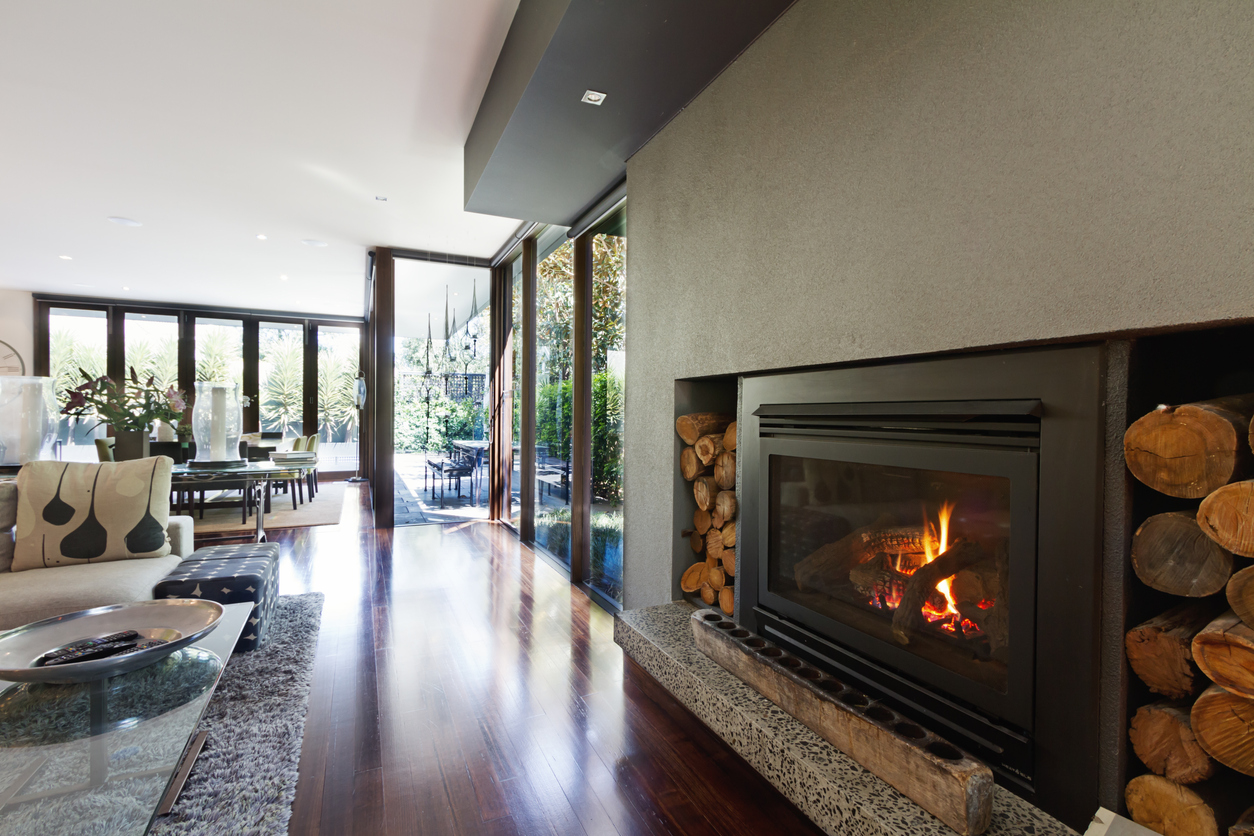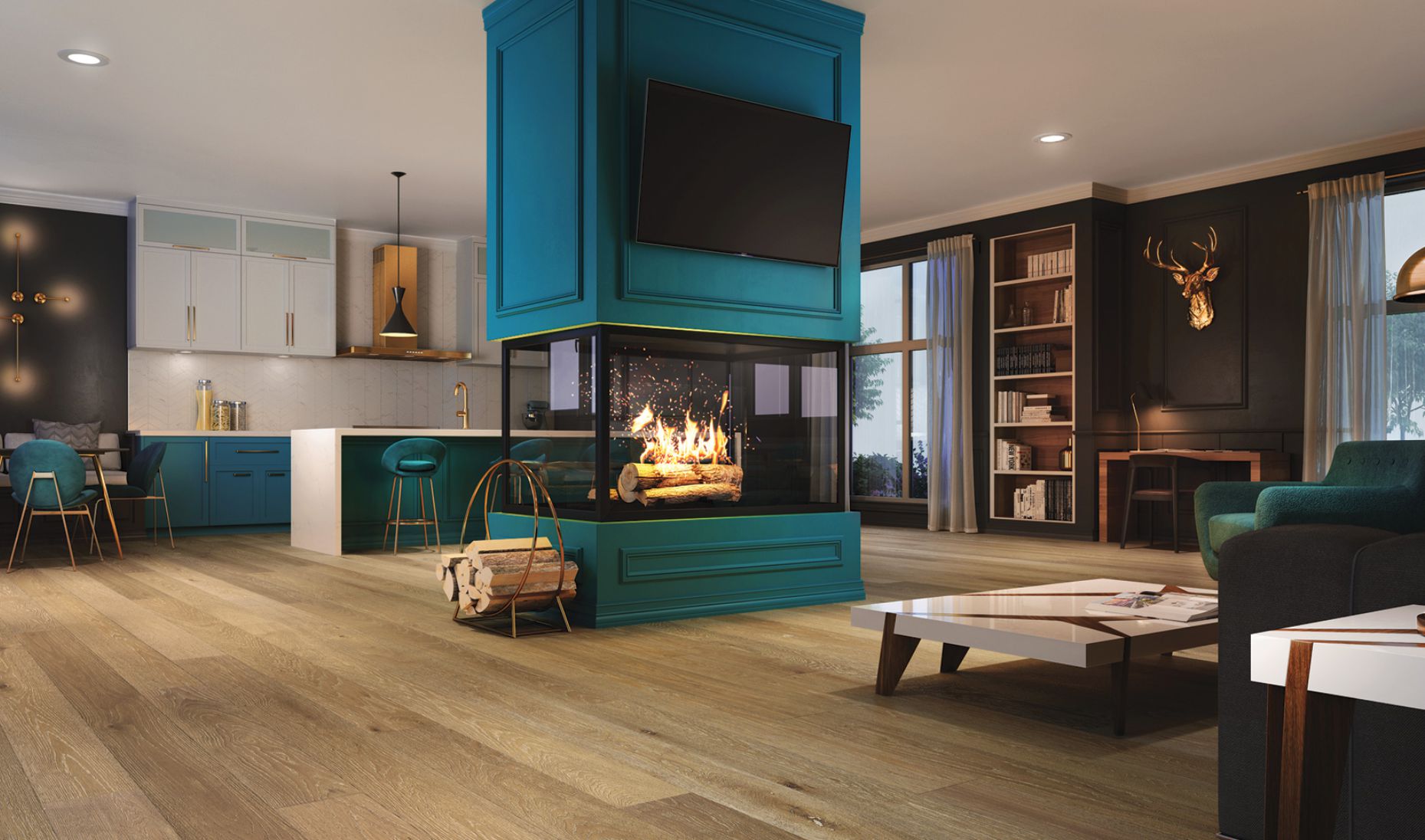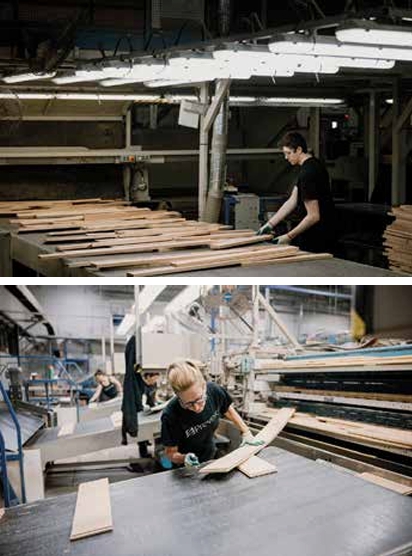
In the world of home improvement, flooring choices can make or break the look, feel, and value of your space. Synthetic floors—like vinyl planks, laminate, and luxury vinyl tile (LVT)—have gained popularity for their affordability and water resistance. But what's the hidden truth? While they promise convenience, these man-made materials often come with drawbacks that affect your health, wallet, and the planet. In this blog, we'll uncover why genuine hardwood flooring outshines synthetics in every way, from everyday performance to long-term sustainability. And if you're ready to make the switch, we'll spotlight Preverco as the go-to manufacturer for premium, eco-conscious options.
Synthetic floors might seem like a quick win with their low upfront cost and easy installation, but they can't hold a candle to the timeless quality of hardwood. Here's why real wood is the superior choice for your home:

Hardwood floors are built to last. Made from solid planks of natural timber like oak, maple, or walnut, they can endure decades of foot traffic, pets, and everyday wear. Unlike synthetic materials, which often chip, peel, or fade after just 10-15 years, hardwood can be sanded and refinished multiple times—potentially adding another 20-30 years to its life. This means fewer replacements and more savings over time, even if the initial investment is higher. Synthetic floors, while tough against spills, lack the structural integrity to handle deep scratches or heavy impacts without showing irreparable damage.
Nothing replicates the warmth and character of genuine hardwood. Each plank boasts unique grain patterns, colors, and textures that evolve beautifully with age, creating a luxurious, one-of-a-kind look that synthetics simply mimic—but never truly achieve. Over time, vinyl or laminate can look "plastic-y" or dated, especially as the printed layers wear down. Hardwood also feels better underfoot: it's naturally softer and more comfortable, regulating temperature to keep your home cozy in winter and cooler in summer. Synthetics, often colder and harder, don't offer that organic comfort.
Synthetic floors are petroleum-based, which means they can off-gas volatile organic compounds (VOCs) that contribute to poor indoor air quality—potentially irritating allergies or respiratory issues. Hardwood, on the other hand, is a natural product with minimal chemical treatments, promoting a healthier living environment. Maintenance is straightforward too: a simple sweep and damp mop keep hardwood looking pristine, without the need for harsh chemicals that synthetics sometimes require to prevent mold in humid areas.
Investing in hardwood pays dividends when it's time to sell. Buyers love the elegance and durability it adds, often increasing property value by 3-5% or more. Synthetic options? They might save money short-term but can make your home feel generic, deterring premium offers.
In short, while synthetics offer convenience, hardwood delivers enduring quality that enhances your lifestyle.
Beyond personal benefits, your flooring choice impacts the planet. Synthetic materials, derived from non-renewable fossil fuels, contribute to environmental degradation at every stage—from extraction to disposal. Hardwood, when sourced responsibly, tells a greener story.
The Environmental and Health Costs of Vinyl and Wood-Look Alternatives
Most synthetic floors are made from PVC (polyvinyl chloride) or high-pressure laminates, both of which depend on on-renewable, fossil fuel-based inputs. According to the Healthy Building Network, the production of PVC emits dioxins, mercury, and phthalates — toxic substances harmful to humans and ecosystems.
Fact: A 2023 study published in Environmental Science & Technology found that vinyl flooring is a significant source of phthalate exposure in children — particularly DEHP and DINP, which are linked to hormone disruption and developmental concerns.
Note: If you are making the choice to go with vinyl flooring make sure the manufacturer is adhering to the highest of North American standards. Often overseas manufacturers do not have the same regulations.
Once installed, vinyl floors can also continue to off-gas volatile organic compounds (VOCs) into the home, negatively affecting indoor air quality.
End-of-life issue: Vinyl and laminate are not recyclable in most municipal programs. They typically end up in landfills where they can take hundreds of years to decompose, releasing microplastics and toxic leachates into surrounding soil and water.
Hardwood comes from trees, a renewable resource when harvested from managed forests. Certifications like FSC (Forest Stewardship Council) ensure that for every tree cut, more are planted, preserving ecosystems and biodiversity. Synthetic floors rely on petrochemicals, which deplete finite oil reserves and release greenhouse gases during production. Studies show that the carbon footprint of vinyl flooring can be up to 10 times higher than sustainably produced hardwood over its lifecycle.
At the end of their life, hardwood floors break down naturally or can be recycled into mulch, furniture, or even biofuel—zero waste to landfills.
Synthetics? They're destined for the dump, where they linger for centuries as microplastics, polluting soil and waterways. Hardwood also acts as a carbon sink during growth, absorbing CO2 from the atmosphere, which offsets emissions far better than the energy-intensive manufacturing of plastics.
Producing hardwood requires less energy and water compared to synthetics, which involve complex chemical processes. Locally sourced wood, like that from North American mills, cuts transportation emissions even further. By choosing hardwood, you're not just flooring your home—you're supporting a cycle that combats climate change.
Opting for hardwood isn't just smart; it's a step toward a more sustainable future.

When it comes to sourcing top-tier hardwood, look no further than Preverco, a family-owned Canadian manufacturer with over 35 years of expertise in solid and engineered hardwood flooring. Based in Quebec, Preverco produces 100% of its floors in Canada, adhering to strict environmental regulations for logging and materials. Their commitment to the smallest carbon footprint in the industry means every plank supports sustainable forestry without compromising on beauty or performance.
Preverco offers a stunning range of options, from rift and quarter-sawn white oak for dramatic grains to versatile engineered platforms that handle humidity and modern lifestyles. Whether you're renovating a cozy living room or outfitting a high-traffic kitchen, their hassle-free collections deliver the authentic hardwood experience—durable, eco-friendly, and elegantly timeless. Plus, with a focus on quality craftsmanship, Preverco ensures your floors not only look incredible but last for generations.
Ready to uncover the truth in your own home? Visit The Hardwood Flooring Store to explore their collections and find a dealer near you. Ditch the synthetics and embrace the real thing—your floors (and the planet) will thank you.